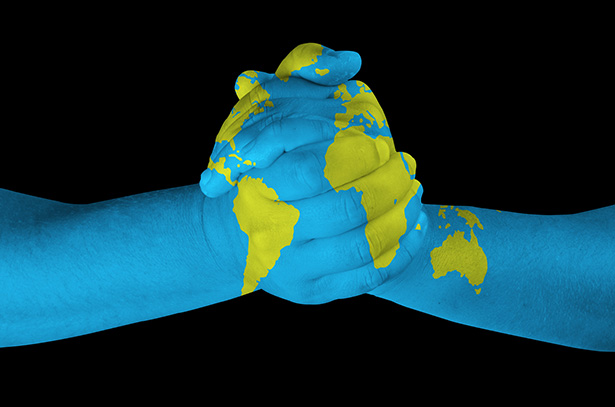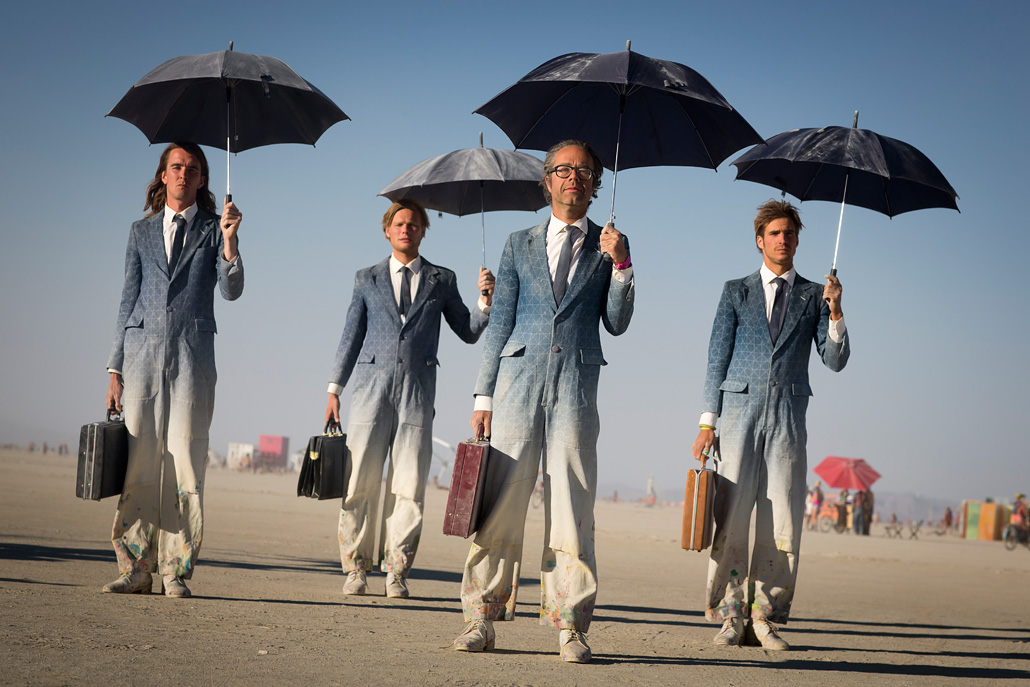It may be a game, but Andrea Gini plans to “maker” a world of difference with it.
Andrea, a Regional Contact for Europe and a long-time tinkerer, has joined forces with three other Burners, Nathan Parker, Ian Collingwood and Ben Ahmed, to create the Make It Go project.
The project, which kicks off in May, aims to connect Makerspaces around the world so they can skill-share, relationship-build and ultimately change the way people develop and build practical and fantastical solutions for real-world problems.

And the inspiration behind this game-changing? Burning Man, of course.
“The game is applying the Burner culture to a different kind of community,” says Andrea.
“We have done amazing projects on playa and achieved great goals by collaborating with people from all around the world, so the idea is to transfer this community connection — let’s call it community globalization — from Burning Man to the real working environment.”
According to Andrea, the Maker community and Burner community share many values and approaches, including the desire to make and create, the willingness to share ideas, and the emphasis on collaboration and cooperation.
He says the main difference between the two communities is the local nature of Makerspaces and their collaborations. The Make It Go project is meant to change all that.
Game of Makers
Over 30 days, 30 Makerspaces will each have 24 hours to add to the conceptual design of a machine, and then pass it on to the next Makerspace in their group. There will be multiple groups of spaces involved in each game.
There is no particular design goal in mind, and the process is up to the teams, so what they end up creating is anybody’s guess. At the end of 30 days, each space will build a model of the final machine design.

Andrea expects to run multiple games in parallel, thanks in part to an unexpected partnership opportunity that cropped up at the GLC.
Make Magazine and Will Chase — Burning Man’s former Minister of Propaganda and now Make Magazine’s Director of Content and Community — have offered their networks and support to the Make It Go project. This will allow the project to reach and promote the game to 7.5 million makers worldwide.
But the real game-changing begins after Andrea and his gang of trusty Burners have run three to four iterations of each game, and the spaces are working together.
“The Maker spaces are going to propose a challenge, and there is going to be a poll to decide which challenge they want to work on,” says Andrea.
“So we’re giving them games, but they’re going to propose challenges that will solve their local problems. And once they start solving real-life problems, if the outcome is really interesting, it will be directed to the Pollen accelerator.”
Taking it Up a Notch
Pollen is a hybrid company — part nonprofit foundation, part start-up accelerator — that Andrea, Ian and Ben have set up.
“The foundation’s role is to identify early-stage ideas, and support their development and prototyping with space, mentoring, materials, expertise and angel funding,” says Andrea.
 Inspired by the Black Rock Arts Foundation, this part of Pollen will also give grants to Maker spaces so they can keep their costs low and make their spaces accessible to as many income levels as possible.
Inspired by the Black Rock Arts Foundation, this part of Pollen will also give grants to Maker spaces so they can keep their costs low and make their spaces accessible to as many income levels as possible.
“Once the idea is done — proof of concept, marketing research etc. — it goes to the Pollen accelerator, which helps make this idea feasible and helps the makers create a startup,” says Andrea.
One of the first startups to be funded by Pollen is creating a kind of “Yelp” for Makers. This directory and skill-sharing app will include information on skills, equipment, resources and training hours of individuals and spaces. The Make It Go project will collect this information as part of the game subscription.
The app will not only help Makers maintain global connections after the games are finished, it will allow them to find that random someone with the skill set that they need to finish a project, or to rock up to a new space with a record of their training hours and the ability to jump straight on to the equipment.
 It will also connect Makers with companies looking to build teams for a commissioned project.
It will also connect Makers with companies looking to build teams for a commissioned project.
“We want to be a collector of projects and ideas, redistribute everything to the Maker, and distribute the Maker to these companies,” says Andrea.
“We will build a two-way connection between Makers and the rest of the world because Makers have often have no idea where to propose their idea or product, get funding, get help or even how to run a company.”
The Maker World is Coming
And why is any of this a big deal? Because it’s part of a broader shift in the way we innovate and create as communities, countries and companies. The big C is no longer competition: it’s collaboration.
“People are beginning to understand that the collaborative model works better than a competitive model because you can achieve better results by sharing with other people,” Andrea says.

According to him, the next generation of truly innovative products and services will not be conceived, built or launched by large multinationals with teams of designers, engineers and marketing departments. It will be created by the people for the people.
“If you let people create what they need and want, you’re going to solve the problems better, and you’re going to have real investment and energy — because it is solving their problems,” says Andrea. “Without a collaborative model, we’re not going to get anywhere.”
And the globally connective nature of the Burner community is a template for extending the power of the collaborative model one step further.
“Right now, people work together on a Creative Commons project, but they’re a local community,” says Andrea. “We’re trying to connect these local communities to have a bigger shared mind to work on these projects.”
Wanna join the Make It Go game or hankering for more info? You can drop Andrea and Co a line at hello@thisispollen.com
Top photo by Vaughn Wallace, courtesy of the Children’s Museum of Pittsburgh

